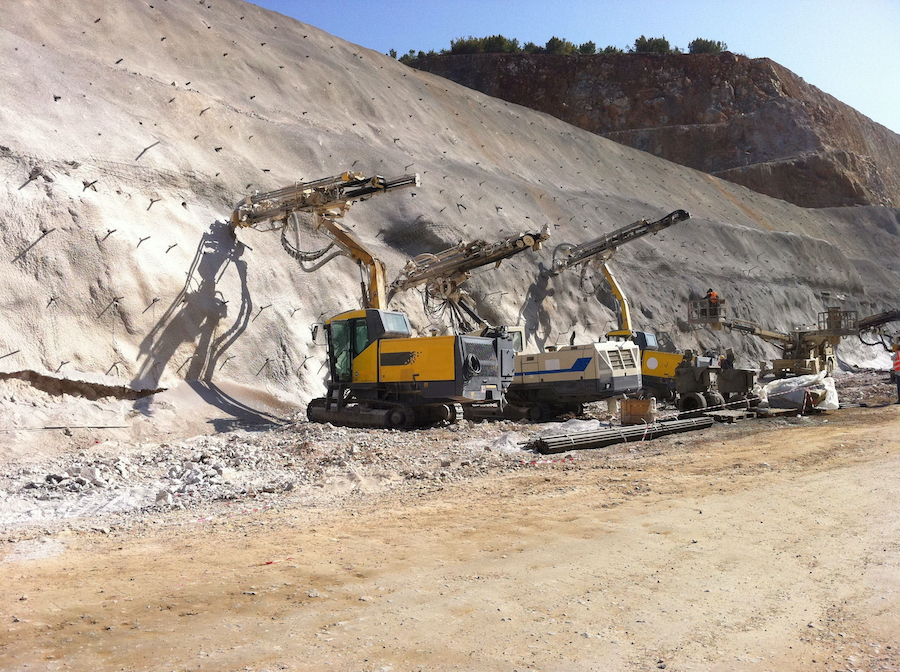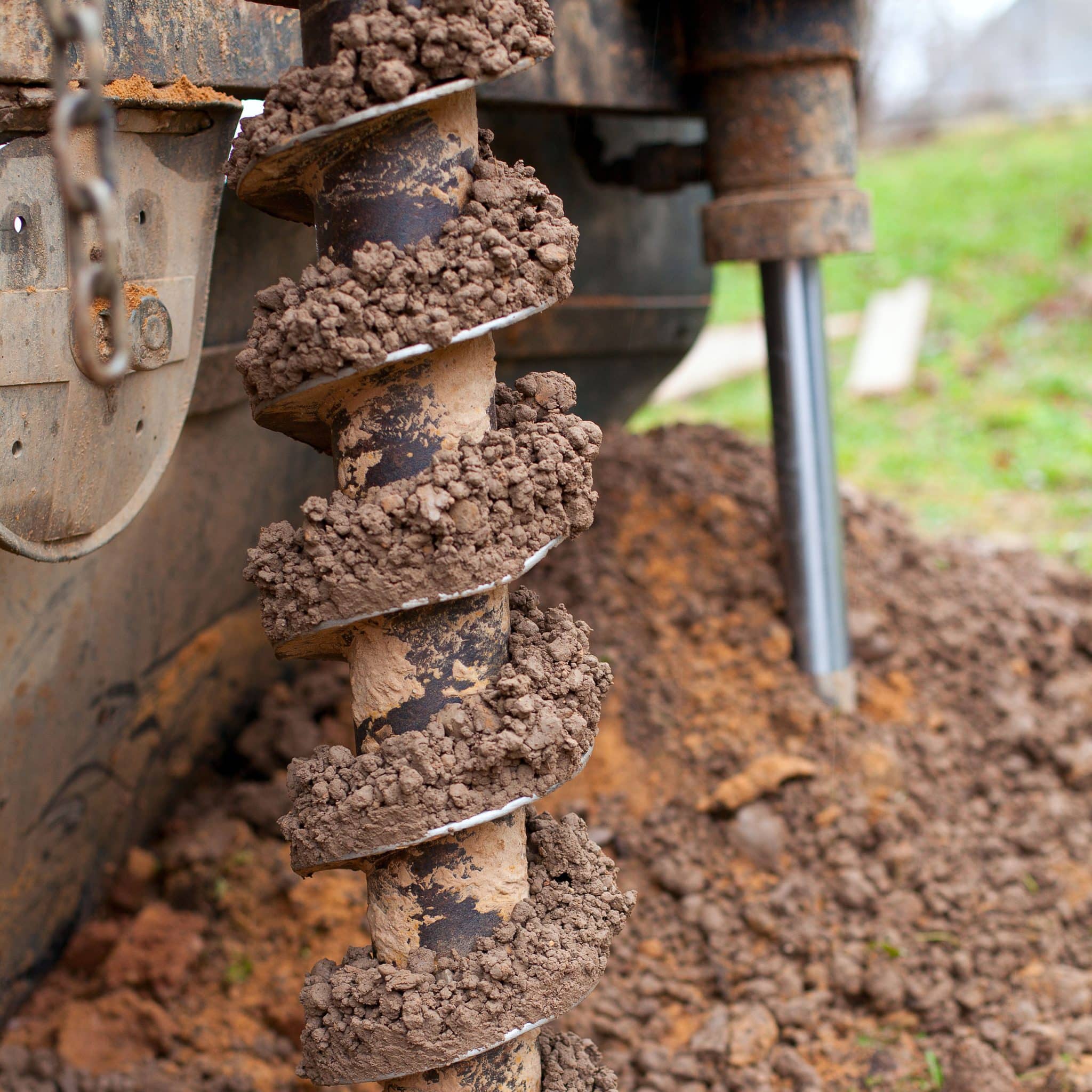Leading Geotechnical Companies in South Africa: That You Need to Know
Leading Geotechnical Companies in South Africa: That You Need to Know
Blog Article
An Extensive Introduction of Geotechnical Engineering Techniques and Their Impact on Modern Civil Engineering Projects
Geotechnical design acts as the backbone of contemporary civil design, providing important strategies that resolve the intricacies of subsurface conditions. The interaction of dirt evaluation, structure layout, and cutting-edge innovations forms the honesty and sustainability of framework jobs. As we check out these methodologies, it comes to be clear just how essential they are in mitigating possible dangers connected with construction. The ramifications of these methods extend beyond plain security; they additionally affect job efficiency and ecological factors to consider, elevating vital questions regarding future innovations in the area. What continues to be to be discovered is the transformative potential of these innovations on city growth.
Value of Geotechnical Design
Geotechnical engineering offers as a vital structure for civil engineering projects, influencing the safety and stability of structures. This self-control concentrates on the actions of soil and rock materials, giving essential understandings that assist the layout and building procedures. By comprehending the communication in between the planet and crafted structures, geotechnical designers can examine threats associated with ground conditions, such as settlement, incline stability, and liquefaction.
The value of geotechnical engineering prolongs beyond simple structural integrity; it plays a vital role in environmental management and sustainability. Appropriately implemented geotechnical assessments make sure that tasks minimize their ecological impact and abide by regulatory demands (geotechnical companies in south africa). Furthermore, geotechnical engineering contributes in website selection, allowing engineers to recognize appropriate locations for construction that alleviate prospective hazards.
In enhancement, geotechnical design cultivates innovation in civil engineering by progressing techniques for ground enhancement, structure style, and excavation. The discipline's contributions are critical in dealing with difficulties presented by varying dirt conditions, thus assisting in effective and secure framework development. On the whole, the relevance of geotechnical engineering is critical in making sure that civil engineering projects are not just possible but additionally durable versus natural and synthetic hardships.
Secret Strategies in Geotechnical Design

One more important technique is dirt stabilization, which involves customizing dirt residential or commercial properties to improve load-bearing ability or minimize negotiation. Methods such as adding cement, lime, or using geosynthetics are commonly utilized to achieve soil renovation.
Ground enhancement techniques, including dynamic compaction and vibro-replacement, are also important. These techniques intend to densify soft or loose soils, boosting their stamina and reducing liquefaction potential in seismic areas.
Maintaining structures, such as sheet heaps and soil nailing, are utilized to sustain excavations and avoid dirt motion. Incline stablizing techniques, consisting of drain systems and maintaining walls, are important for minimizing landslide dangers.

Soil Evaluation and Examining Approaches
Effective soil evaluation and testing techniques are essential for understanding the physical and chemical residential or commercial properties of soil, which straight affect design decisions. A detailed analysis of soil features is necessary for anticipating habits under different loading conditions and ecological influences.
Common dirt screening methods include both area and lab methods. Area examinations, such as the Criterion Penetration Test (SPT) and Cone Infiltration Examination (CPT), provide instant insights right into dirt thickness, stratification, and strength. These examinations aid designers analyze site conditions efficiently prior to more considerable lab analyses.
Laboratory screening approaches, such as Atterberg limitations, grain size circulation, and compaction tests, are vital for figuring out dirt plasticity, dampness content, and optimum compaction degrees. Additionally, advanced strategies like triaxial tests and consolidated undrained (CU) tests use useful information on shear stamina and reliable tension specifications - geotechnical specialist.
Chemical testing, consisting of pH, electric conductivity, and click to investigate natural content evaluation, is likewise crucial for recognizing prospective dirt contamination and its influence on building materials. Collectively, these dirt analysis and screening approaches create the foundation of notified decision-making in geotechnical engineering, ensuring the security and stability of modern civil design tasks.
Structure Layout Approaches
These approaches can be categorized right into deep and shallow foundations, each suited to particular dirt conditions and loading circumstances. Shallow structures, such as spread grounds and floor covering foundations, are commonly utilized when surface area soils have appropriate bearing capacity.
On the other hand, deep structures, consisting of heaps and drilled shafts, are used when surface area dirts are weak or insufficient for sustaining the structure. These structures transfer loads to deeper, much more steady dirt or rock layers, making them essential for skyscrapers and bridges in tough geotechnical problems.
Choosing the suitable foundation design includes detailed geotechnical investigations, consisting of soil composition, bearing ability, and groundwater conditions. In addition, engineers have to take into consideration aspects such as negotiation, side tons, and potential seismic task to guarantee the structure's efficiency over time.
Eventually, a well-executed foundation design is a crucial element of civil engineering, straight affecting the safety, sturdiness, and functionality of structures. geotechnical specialist. By straightening foundation kinds with site-specific problems, designers can successfully minimize dangers connected with structure failing
Advancements Shaping Civil Engineering

Lasting materials, such as high-performance concrete and recycled accumulations, are also gaining traction, advertising eco-friendly practices while maintaining structural stability. Additionally, progressed geotechnical techniques, such as ground enhancement and deep mixing approaches, are boosting the stability of structures in difficult soil problems.
Furthermore, the usage of drones and remote noticing modern technology is boosting website evaluating and keeping track of, supplying real-time information that help in handling construction progression and safety and security. The implementation of ingenious building methods, such as modular and prefabricated building, even more speeds up task timelines and decreases waste. Jointly, these technologies are not only transforming civil engineering techniques but likewise ensuring that modern framework meets the needs of a growing international population while resolving environmental issues.
Final Thought
To conclude, geotechnical design methods are important to the success of modern-day civil design projects. The application of website investigation, soil stablizing, and ground improvement approaches makes sure the safety and security and security of infrastructure. Technologies such as Structure Details Modeling (BIM) and progressed surveillance technologies further boost task effectiveness and precision. By employing these techniques, designers can minimize threats and add to the advancement of durable city atmospheres, inevitably fostering lasting development and safety and security in civil design techniques.
Geotechnical design offers as the foundation of modern-day civil engineering, giving essential techniques that resolve right here the complexities of subsurface problems.Geotechnical design serves as an important structure for civil engineering jobs, affecting the safety and security and security of frameworks.In addition, geotechnical engineering fosters advancement in civil design by advancing techniques for ground improvement, structure style, and excavation. On the whole, the relevance of geotechnical design is vital in guaranteeing that civil design jobs are not only possible yet additionally resistant against man-made and all-natural difficulties.
In conclusion, geotechnical design methods are indispensable to the success of modern-day civil engineering projects.
Report this page